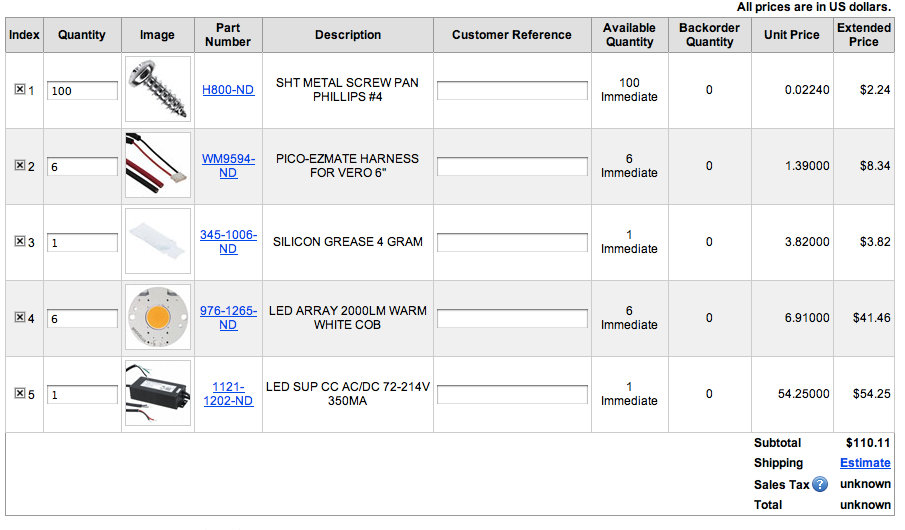Dion
Active member
Just an idea for those interested in this type of set up
cheap as chips/easy as piss to build for lighting a pc case like
Server-Tower
CA-01B-B-SL
530 x 205 x 650 mm
so its total canopy is about 1.14 sq ft
there are 5 builds and plenty of variations and mix and match fun here!
I appreciate everyone who posts their builds and gives back to the community
Before you guys start trippen that you dont see CXB and meanwell drivers its because these are cheap-easy 40% efficient builds not ultra 65 % efficient expensive builds
the meanies would be good on these bigger builds so ill add those in or carts where digi gets thier 100
OTHER KITS
THE ALL AMERICAN
https://www.icmag.com/ic/showpost.php?p=7221783&postcount=16
THE BUT IM NOT IN AMERICA
https://www.icmag.com/ic/showpost.php?p=7221876&postcount=18
THE MAMOTH
https://www.icmag.com/ic/showpost.php?p=7222790&postcount=21
THE BIG DADDY
https://www.icmag.com/ic/showpost.php?p=7248138&postcount=33
lets see how cheaply we can get above 6000 Lumens in there with focus on price,ease of build and passive cooling for stealth and efficiency above/equal to 140L per watt
BUILD # 1 The 'el cheapo'
[Price: $69] [Skills Required: Soldering] [Tools Required: soldering iron] [44watts/6000 Lumens]
we will use Cree XP-G2 R5 2800-3500K (115 degree viewing angle so lenses are totally optional in this tight space)

so at 600mA we get 140L/w and about 250L each chip-seen as they are only 2 watters we can attach with a thermal pad and reduce the cost of mounting
it will push them @ 600mA in series but unfortunately can only drive 12 per string without reducing the mA so we will have 1 spare chip
mount 8 chips per heat sink
lets see what that costs

$68.71

what does that get us?
6079.2 L
140.4 L per watt
43.3W total

DISCLAImER: This is a set-up that requires you to solder the chips in series

SHOPPING LIST
(5x5 pack of chips[25 total chips])https://www.fasttech.com/p/1921703
(2x 20 pack of thermal pads)https://www.fasttech.com/p/1350301
(x2 driver)https://www.fasttech.com/p/1734701
(x3 heatsink)https://www.fasttech.com/products/1348407
cheap as chips/easy as piss to build for lighting a pc case like
Server-Tower
CA-01B-B-SL
530 x 205 x 650 mm
so its total canopy is about 1.14 sq ft
there are 5 builds and plenty of variations and mix and match fun here!
I appreciate everyone who posts their builds and gives back to the community
Before you guys start trippen that you dont see CXB and meanwell drivers its because these are cheap-easy 40% efficient builds not ultra 65 % efficient expensive builds
the meanies would be good on these bigger builds so ill add those in or carts where digi gets thier 100
OTHER KITS
THE ALL AMERICAN
https://www.icmag.com/ic/showpost.php?p=7221783&postcount=16
THE BUT IM NOT IN AMERICA
https://www.icmag.com/ic/showpost.php?p=7221876&postcount=18
THE MAMOTH
https://www.icmag.com/ic/showpost.php?p=7222790&postcount=21
THE BIG DADDY
https://www.icmag.com/ic/showpost.php?p=7248138&postcount=33
lets see how cheaply we can get above 6000 Lumens in there with focus on price,ease of build and passive cooling for stealth and efficiency above/equal to 140L per watt
BUILD # 1 The 'el cheapo'
[Price: $69] [Skills Required: Soldering] [Tools Required: soldering iron] [44watts/6000 Lumens]
we will use Cree XP-G2 R5 2800-3500K (115 degree viewing angle so lenses are totally optional in this tight space)
so at 600mA we get 140L/w and about 250L each chip-seen as they are only 2 watters we can attach with a thermal pad and reduce the cost of mounting
it will push them @ 600mA in series but unfortunately can only drive 12 per string without reducing the mA so we will have 1 spare chip
mount 8 chips per heat sink
lets see what that costs
$68.71
what does that get us?
6079.2 L
140.4 L per watt
43.3W total
DISCLAImER: This is a set-up that requires you to solder the chips in series
SHOPPING LIST
(5x5 pack of chips[25 total chips])https://www.fasttech.com/p/1921703
(2x 20 pack of thermal pads)https://www.fasttech.com/p/1350301
(x2 driver)https://www.fasttech.com/p/1734701
(x3 heatsink)https://www.fasttech.com/products/1348407
Last edited:





